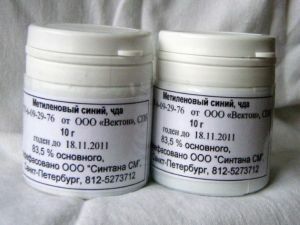 Solid methylene blue substance from the group of organic thiazine dyes has the form of dark green crystals having a bronze outflow, or the same kind of powder.
Solid methylene blue substance from the group of organic thiazine dyes has the form of dark green crystals having a bronze outflow, or the same kind of powder.
It is difficult to dissolve in such traditional solvents as water and ethyl alcohol and practically does not dissolve either in chloroform or in diethyl ether.
Contents
- Substance with versatile interests
- Both intravenously and externally
- Some features of the
- application Possible side effects
- Aesthetic use in dentistry
- Leaving "at rest" early
- acting analogously Price - pennies, effect per million
Substance with versatileinterests
Originally conceived for painting silk, wool and cotton fabrics to give them a bright blue color, this dye soon found application in a wide variety ofthe spheres of human life: in analytical chemistry, in water purification and even in the maintenance and breeding of aquarium fish.
In medicine, methylthioninium chloride, also called:
- methylene blue;
- methylene blue;
- with blue methylene;
- with methylene or methyl blue;
- methyleneblue.
Well established itself as an indispensable antidote( antidote) for poisoning with hydrogen sulphide, carbon monoxide and cyanide 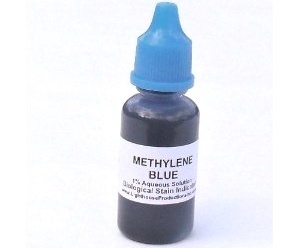 compounds.
compounds.
But above all - it's an excellent antiseptic( disinfectant) remedy with a long and glorious history.
And one of its active users is practical dentistry( both therapy and surgery), where disinfection issues are particularly acute.
Because of how the oral cavity is treated, not only health, but often also the patient's life, depends.
Both intravenously and externally
The preparation has the form of a powder( sachets of 10 g) from which a solution( aqueous or alcoholic) is prepared of the required volume and concentration, or a ready 1% aqueous solution of a dark blue color( in a 25 ml vial)or contained in ampoules of 20-25 ml of a 1% solution on 25% glucose solution.
The solution contains:
- methylthioninium chloride( main action substance);
- ethanol( ethyl alcohol).
The drug is suitable for ingestion by both adults and children for the diagnosis and treatment of renal disease.
Introduced in a vein as a 1% aqueous solution( or 1% solution in 25% glucose solution) at a dose of 50-100 ml, methylene blue becomes the antidote of nitrites and aniline preparations. It is also effective for carbon monoxide( carbon monoxide) poisoning, cyanide compounds( hydrocyanic acid compounds) and hydrogen sulfide, restoring methhemoglobin to hemoglobin.
But when the substance is used in higher doses, the process takes the opposite direction: hemoglobin is oxidized to the state of methhemoglobin, the blood loses its ability to transfer oxygen to organs and tissues and the metabolic processes in them are inhibited.
Introduced intravenously, methylene blue is excreted in the urine, giving it a blue color, which makes it possible to evaluate the excretory capacity of the kidneys, which is valuable for the diagnosis of urological( renal) diseases.
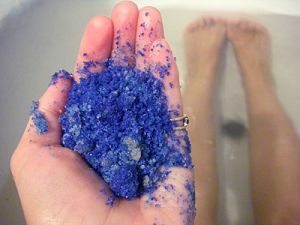 It is used as an antiseptic for washing the infected cavities in the form of 0.02%( or 1: 5000) solution or as a 1% alcohol solution for treating the skin in its diseases. The action of methylene blue as an antiseptic is associated with exposure to microorganisms at the molecular level( at the level of proteins and mucopolysaccharides from which they are built).
It is used as an antiseptic for washing the infected cavities in the form of 0.02%( or 1: 5000) solution or as a 1% alcohol solution for treating the skin in its diseases. The action of methylene blue as an antiseptic is associated with exposure to microorganisms at the molecular level( at the level of proteins and mucopolysaccharides from which they are built).
The versatility of this simple substance is related to its ability in the course of redox reactions to act as a donator, then an acceptor of hydrogen ions-protons.
Some features of the application of
Methylene blue is not used in the treatment of children under one year of age. Pregnant women, he is appointed for special indications, as well as when breastfeeding with parenteral use.
The product should not be used with increased individual sensitivity to the ingredients of the preparation, as well as for the treatment of the eye mucosa.
Possible side effects of
When applied to the skin, the agent can not enter the bloodstream. Therefore, side effects can occur as with too rapid intravenous administration, and with its overdose, or from the use of the drug itself.
These can be systemic manifestations in the form:
- nausea;
- vomit;
- epigastric pain;
- decrease in appetite;
- pain in the projection of the bladder and kidney;
- headaches;
- mental discomfort,
- the possibility of anemia and allergic reactions( especially when treating large areas of the skin).
With the development of overdose phenomena to eliminate its symptoms, symptomatic therapy is performed according to accepted standards.
Aiming application in dentistry
If the properties of the drug make it possible to use it even in surgical operations for hyperparathyroidism( parathyroid gland pathology), in dentistry methylene blue is in some cases an antiseptic simply irreplaceable.
In this field of medicine and surgery, the substance is used in the form of a ready aqueous 1% solution applied to both damaged and adjacent healthy tissues( without the risk of their damage).It is applied with the help of a cotton swab or a tampon( the substance stains the skin when working with hands).
The question of the use of methylene blue for the treatment of dental diseases( stomatitis, gingivitis, candidiasis) is decided by the doctor on the basis of the established diagnosis.
Diagram of the use of blue methylene:
- With stomatitis , a spot moxibustion( stamping) is made with a cotton swab soaked in a 1% aqueous solution of methylene
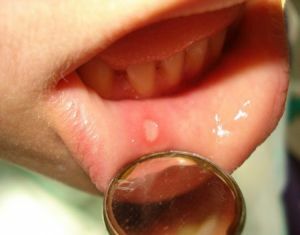 blue. Possible scheme of use for stomatitis in combination with other drugs: moxibustion with methylene blue every 2 hours, followed by lubrication with stomatidine;an hour after the application of the stomatidin - rinse and apply on aphthae Vinylinum( balm Shostakovskogo).
blue. Possible scheme of use for stomatitis in combination with other drugs: moxibustion with methylene blue every 2 hours, followed by lubrication with stomatidine;an hour after the application of the stomatidin - rinse and apply on aphthae Vinylinum( balm Shostakovskogo). - Application for gingivitis ( varying degrees of severity of gingival lesions) is the lubrication of affected areas with 1-2% methylene blue solution.
- In the treatment of thrush - candidiasis stomatitis in the oral cavity methylene blue continues to be the most actual means of extermination of this kind of fungus, due to which the epithelization of mucous membranes occurs quickly. The multiplicity of the treatment of foci of inflammation in the oral cavity is also determined by the physician, it depends on the degree of severity of the process. For adults, it can be from 6( minimum) to 15 treatments per day, for children - from 3 to 6 times a day. If the recommendations are observed, healing begins after 2-3 days.
Leave "at rest" early
Reviews of ordinary people confirm - methylene blue should take a worthy place in the medicine cabinet.
The age of the child was about a year, when he fell ill, at first he thought: the teeth are being cut. But when the temperature reached almost 40 °, on the lower lip showed white spots up to two millimeters, was diagnosed: Candidiasis.
The only effective tool of all used was methylene blue - the process was reversed after 3 days. Thank you, that she still is in pharmacies! However, the shelf life after the opening of the bottle is only 10 days, but without a prescription.
Jeanne( Astrakhan)
I was very surprised when the doctor recommended stomatitis methylene blue. But the doctor was already in solid years and spoke very convincingly. I'm not sorry, everything went very quickly. The only drawback of the drug is that it makes your hands dirty and does not wash off your clothes. But this can be experienced, most importantly - it helps.
Tatiana( Petrozavodsk)
With great reluctance, I was sold methylene blue in the pharmacy for the treatment of inflammation on the gums - it costs a penny, only 40 rudders! The showcase exhibits other, newer means, but I clearly remember my blue mouth and hands in my childhood, when my mother burned my wounds in my mouth just with blue. And all passed in a few days. It will be very disappointing if the import "squeezes out" this wonderful remedy from our life. Early to him, still "to rest"!
Elena( Novokuznetsk)
Analogues analogous to
Analogues to methylene blue in the group of thiazine dyes are not available. Close in action is a drug from a number of aniline dyes - brilliant green.
Used in the form of an alcohol solution( 1% or 2% on 57% ethyl alcohol) or an aqueous solution of it( 0.1 to 2% according to the stated purpose).
One of the fastest and most effective antiseptics with proven bactericidal and fungicidal effect, including Staphylococcus aureus and diphtheria bacillus, is less effective against Gram-negative bacteria and their spores.
In stomatology, 1% alcoholic solution of brilliant green is used along with such well-proven antiseptics:
- Furacilin;
- Bura;
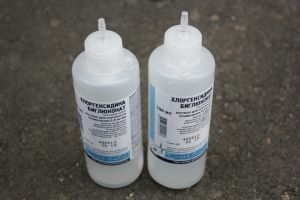
- Chlorhexidine;
- Citral;
- Resorcinol;
- Etacridine lactate( Rivanol);
- Methyl Violet;
- ethyl alcohol.
Price - a penny, the effect - per million
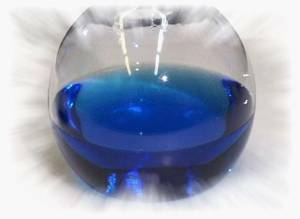 From the powder methylene blue solution is prepared in prescription pharmacies.
From the powder methylene blue solution is prepared in prescription pharmacies.
The price of 1 bottle of a ready-made methylene blue preparation( 25 ml of a 1% aqueous solution for local and external use), made by the Tver pharmaceutical factory, is from 28 to 60 rubles.
When stored in a dry place without access to light at a temperature of 15 to 25 ° C, the product has a shelf life of 2 years.
